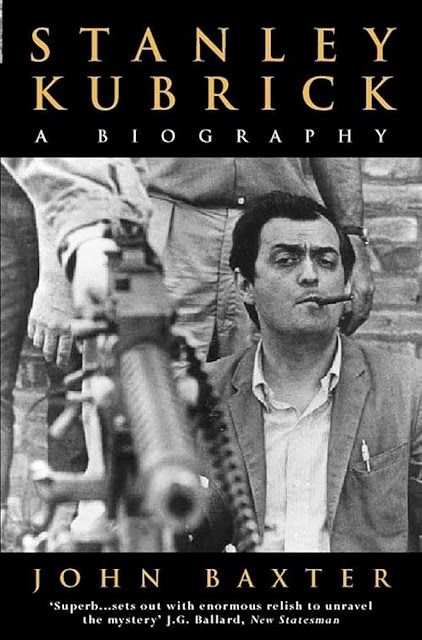C.E.M.A. (1942): Bringing Culture to the Masses
C.E.M.A. stands for the Council for Encouragement of Music and the Arts. This worthy organisation was a forerunner of the Arts Council, formed during World War II to promote music, art and culture.
The 17 minute documentary short C.E.M.A. was designed to show audiences the kind of cultural outreach work that the Council was doing during the war, bringing art, music and theatre to the British people. The film was co-directed by the poet Dylan Thomas, who worked on several of these informational shorts during the Second World War.
Ironically, given that the film is about the creative arts, the makers obviously couldn't think of an interesting title, which shouldn't have been that difficult. Or maybe they thought that sort of thing would be pandering to the masses. So this film about C.E.M.A. is very unimaginatively titled ... er, C.E.M.A.
The film is falteringly introduced by the then President of the Board of Education, R.A. Butler, who fiddles with his pen and looks down at his notes a bit, while telling us about the C.E.M.A. The film then moves onto portraying the work of the Council, organising plays, music recitals and art exhibitions for the ordinary people of Britain.
C.E.M.A bods are shown sticking pins with little flags onto a map, as if they are squadrons of Spitfires being sent into action. But instead of the names of RAF squadrons, the flags are marked with the titles of plays, like "The Merry Wives of Windsor" or "The Cherry Orchard", as C.E.M.A. brings culture to such backward and benighted corners of Britain as Leeds, Birmingham and Manchester.
Small children are shown pretending to play the flute or stringed instruments they have heard at a recital, evidently inspired now that they have been touched by high culture.
There's then a longish scene of actors rehearsing a play, followed by a performance of The Merry Wives of Windsor. C.E.M.A. seems to be trying to meet the public halfway here, providing plays with broad physical comedy, instead of serious speech-making. The audience are shown roaring with laughter, which does seem a little unlikely given that it's a Shakespeare comedy.
The best scene features an art exhibition where the ordinary peasants are being taught to appreciate paintings and watercolours by well-spoken toffs. The members of the public provide their own, slightly stilted commentary on the pictures. The best comes from a sceptical member of the Great British Public who asks:
"What's the point in all this 'ere art? Pretty pictures don't win anything. Not now anyway."
The posh art expert patiently explains to the grubby ruffian that "We all know what we're fighting against, but don't you think we sometimes forget what we're fighting for?"
"Not pretty pictures."
"Yes, but they're part of it. We've got to fight, because if we didn't we wouldn't be free. Free to work, to play, to listen, to look at what we want to."
The film doesn't cut back to the questioner, but I suspect that he still wasn't convinced that the Second World War is being fought over watercolours.
All of this art and culture is intercut with scenes of factory workers making munitions. There are some interesting sequences here, showing the rows and rows of shells being made and then tanks rolling out of the factory and being transported onto railway wagons. To make it all a bit more cultural, this industrial activity is set to a soundtrack of classical music.
More ambitiously, the film cuts in very brief sequences of artillery pieces and Bren gun carriers on manoeuvres, as a counterpoint to the cultural stuff implying, not very convincingly, that the plays and art exhibitions are just as much a part of the war effort as the tanks and guns.
Maybe a performance of The Merry Wives of Windsor in Market Harborough wasn't really a key part of the war effort, but the efforts of C.E.M.A. to bring art and culture to the masses look admirable anyway. The film captures the paternalistic attitudes of the British establishment of the time and its belief in the improving nature of high culture. Never mind bringing freedom to occupied Europe, the real challenge is bringing art and culture to the working classes of Britain.
If it all seems a little quaint now, that's mainly because we've lost faith in the notion of the improving quality of art and music, and in a clear differentiation between the highbrow and the lowbrow. Newspapers carry stories about celebrities and pop culture and what happened on a reality TV show last night as if it's news - something that the C.E.M.A. people would no doubt take a very dim view of. They thought that their cultural efforts were, in their own way, an important part of building a better Britain for the future.
C.E.M.A. can be watched online on the BFI website:
https://player.bfi.org.uk/free/film/watch-cema-1942-online
C.E.M.A.
Year: 1942
Genre: Documentary short
Country: UK
Directors John Banting, Dylan Thomas, Charles de la Tour, Alan Osbiston, Peter Graham Scott, Desmond Dickinson Producer Alexander Shaw Cinematography Charles Marlborough Editors Alan Osbiston, Lyla Granston Musical direction Muir Mathieson
Running time 17 mins (black & white)
Production company Strand Film Company, presented by The National Films Council of the Department of Information





Comments
Post a Comment